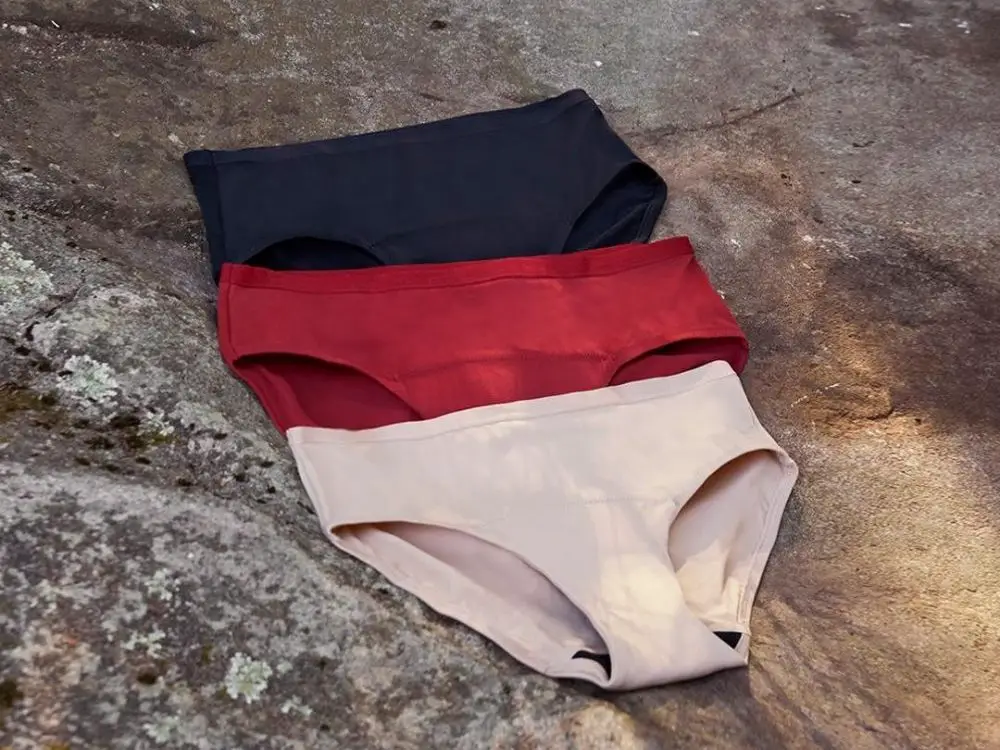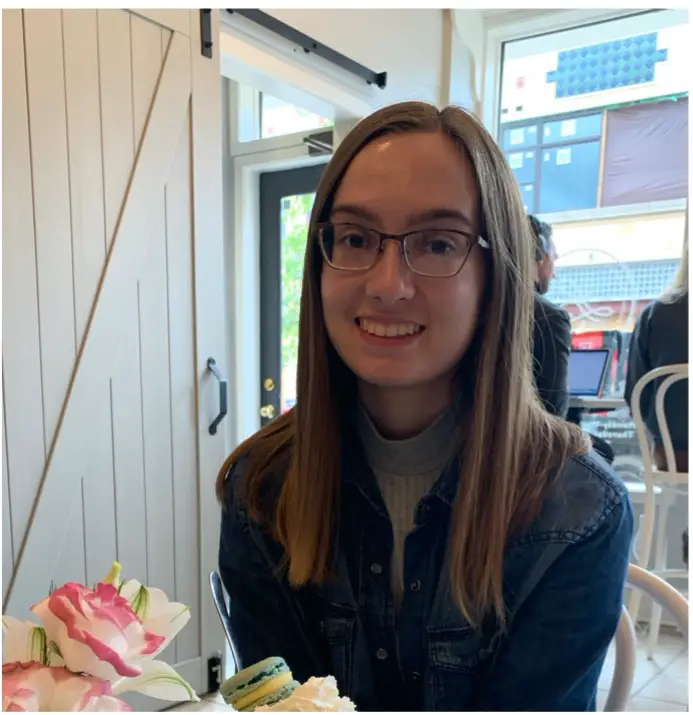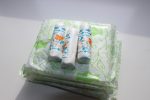Throughout a lifetime, one menstruator will use between five and 15,000 pads and tampons. All this waste, mostly plastic, will end up in a landfill or in the ocean if flushed down the toilet. Sustainable menstruation products, on the other hand, have been popular for the last few years with advertisements and YouTube reviews circulating around the internet. Period pants and underwear, menstrual cups and reusable pads have become a part of a larger conversation on reducing waste and saving money.
Period pants — leggings, shorts and underwear — are made out of fabrics and fiber technology that ensures strengthened absorbency. According to the brand Dear Kate, “Microfibers naturally create hydrophilic pathways” that carry liquid “through the fibers away from the body until it reaches a point where it can evaporate and dry.” This ensures that, throughout the day, the material will continue to stay dry for as long as possible. What is called “moisture wicking” is the weaving of the microfibers that encourage the fabric to dry faster.
As well as absorbency, period pants focus on microbial protection. Dear Kate’s products “are infused with a natural Silver Salt compound which fights bacteria and fungal growth that can also cause yeast infections and UTIs.” Unlike pads and tampons, period pants reduce the likelihood of Toxic Shock Syndrome (TSS) by controlling bacterial growth, and because of this, these products can be worn for up to 24 hours like normal clothing. However, this depends on the heaviness of the individual’s menstrual flow.
One of the major brands for period underwear, Thinx, advertises absorbency, odor control and leak prevention for all their reusable underwear and shorts. In terms of washing them, Thinx suggests “throw ‘em in with the rest of your laundry … then hang them up to dry.” Another major brand, Modibodi, says to rinse them with cold water before tossing them in the washer to get rid of excess blood.
Thinx offers an online quiz to suggest the best period underwear for each individual’s flow. Every pair of underwear has a certain absorbency, usually illustrated for consumers by comparing it to an equivalent number of tampons. At the end of the quiz, it shows the products that fit the individual’s flow, as well as the number of pads, tampons and panty liners that would be saved every month by switching to period underwear.
Nancy Redd and Shannon Palus from The New York Times wrote, “Although it’s a little strange free-bleeding into undies at first, period underwear usually does a good job of keeping menstrual fluid from leaking, as long as you change it frequently enough (in our experience, every two hours or so in the middle of a heavier period).”
There are many YouTubers that have reviewed period underwear, shorts and leggings, like Safiya Nygaard. In her video about period leggings, she found that the “gusset,” or the part between the legs, was prominent in the design, so she adjusted her outfits to hide it. For example, she wore dresses or long tunics and tied her flannel so that the arms cover between her legs. She liked the leggings for leisure and heavy exercise.
Nighttime is when periods tend to be the most uncontrollable, which is typically because of a heavier flow. Thinx created pajama shorts with maximum absorbency in order to combat the age-old stress of leaking through sheets and pajama pants. Regardless of the $50 price tag, the reviews rave about the product, giving it an overall 4.9/5 stars. Reviewers comment on the comfort, pockets and absorbency of the shorts. One reviewer, Caroline, who went through postpartum at the time of the post, wrote, “The padding isn’t bulky and it stays dry. I can wear these all day or all night without worrying about leaking.” The shorts assure people who have their periods that they won’t leak onto the sheets throughout the night.
Not only are these products good for the environment, but they are good for all period-havers. The products make it easier for postpartum pregnancy as it reduces the bulk and offers support for bleeding. Compared to the thick postpartum pads or diaper-like underwear, period pants offer a great alternative for new mothers. They also make it easier for those who experience irritation that comes from the chemicals in pads and tampons. For any spotting, discharge or sweat, period pants and underwear seemingly make getting ready for the day easier and quicker.
One of the main problems with period pants is the inability to change them away from home. For those with heavy flows, it is recommended to wear a supplemental pad or tampon with the pants to reduce the risk of leaking or discomfort. In the description of Dear Kate’s products, they add a disclaimer stating, “Our products can be worn as your main coverage or as a backup for your regular period routine, depending on your personal flow.” While there are specific types that cater toward heavy flows, it is nearly impossible to change while outside of the home, so extra protection is needed, which seems to defeat the purpose of sustainable period products.
One pair of underwear from the biggest sellers typically range around $25-$40. If it can be worn for a maximum of a full day, one would need around three to seven pairs in order to not have to wash the same pair during the week — more so if the person’s flow is heavy and they need to change more often. The upfront price is ridiculously high for someone who is not completely invested in wearing them for a week out of every month for years.
Sarah-Rose Harrison of Marie Claire wrote, “Globally, 45 billion menstrual products are disposed of every year” and that they “contribute to 200,000 tons of landfill waste,” as well as sea pollution when they are wrongly flushed down the toilet. Period products that endorse sustainability like period pants decrease the amount of waste produced. Overall, as long as someone can afford them, period pants are an effective way for people that menstruate to manage their period, and a great way to help the environment on an individual scale.

















